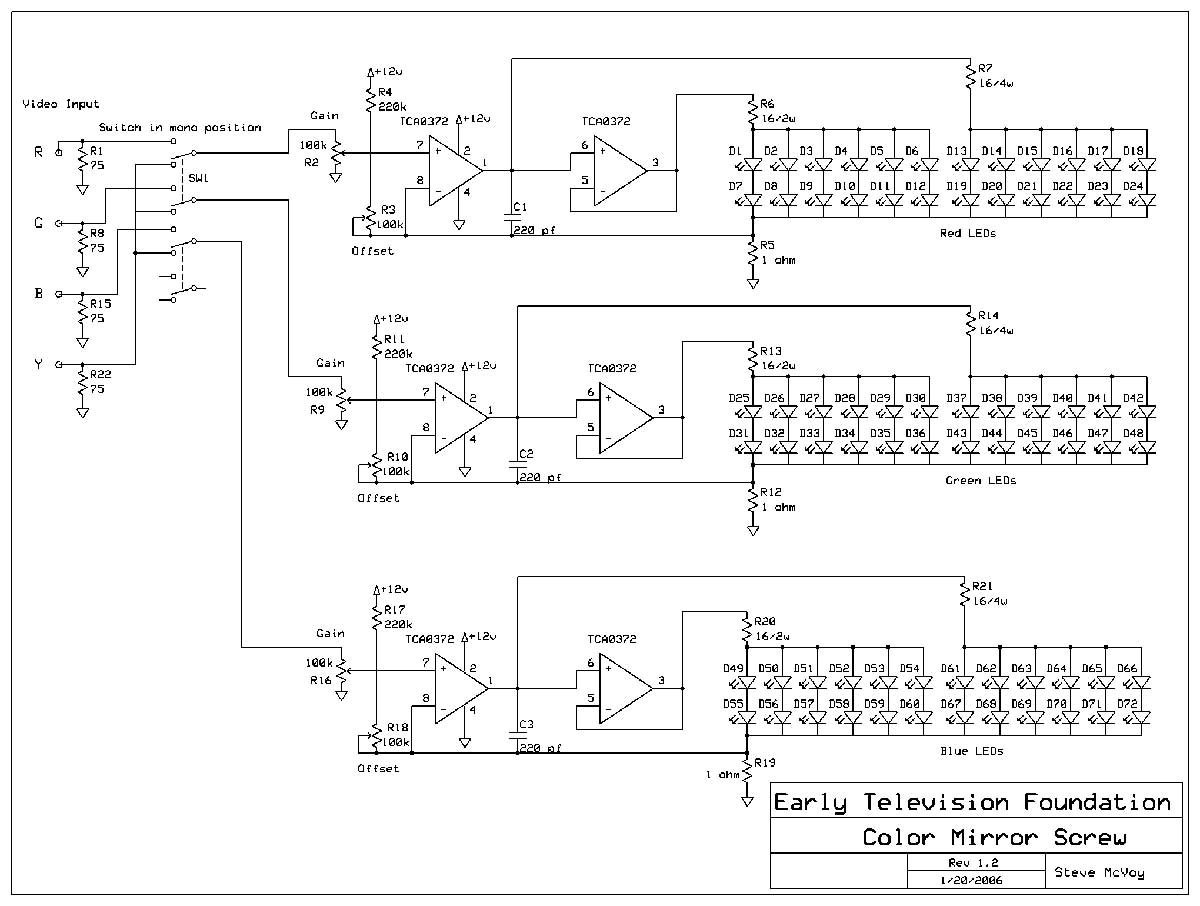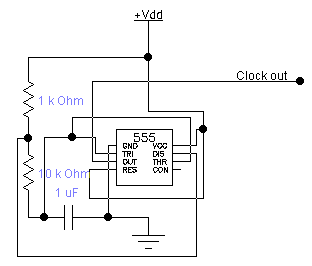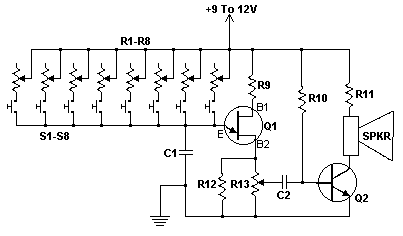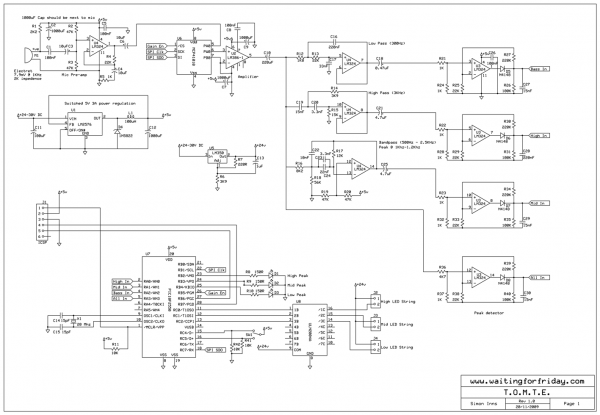
Color organ
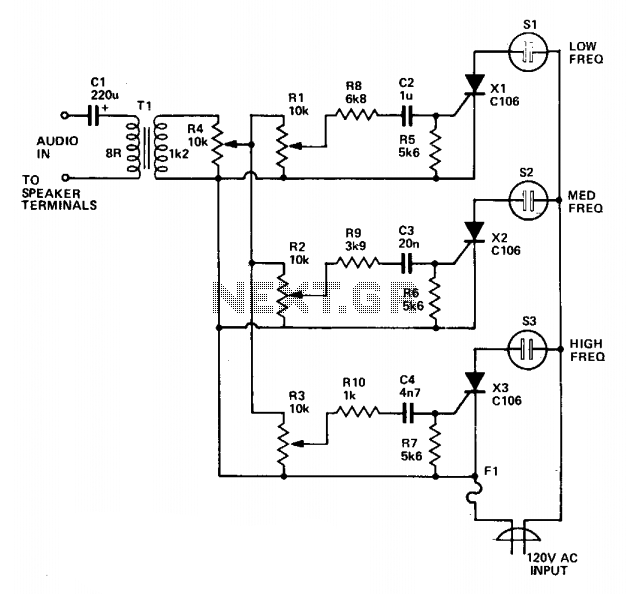
Three lights are controlled by three channels. One light pulses in response to the bass, another illuminates with mid-range sounds, and the last lights up for high notes. Four level controls allow adjustment of the overall light level and each channel individually. Up to 200 watts per channel can be handled.
This electronic circuit design incorporates a three-channel lighting control system that responds dynamically to audio frequencies. Each channel is dedicated to a specific frequency range: low frequencies (bass), mid-range frequencies, and high frequencies. The circuit utilizes a signal processing unit to analyze the audio input and determine the amplitude of frequencies within each specified range.
The bass channel is equipped with a pulse-width modulation (PWM) controller that adjusts the intensity of the light based on the bass signal's amplitude. This creates a visual representation of the low-frequency sounds, causing the light to pulse in sync with the rhythm of the music.
Similarly, the mid-range channel employs a dedicated amplifier and light driver circuit that illuminates the light in response to the mid-range audio signals. The design ensures that the light output is proportional to the mid-range frequencies detected, enhancing the overall visual experience during sound playback.
The high-frequency channel operates in a comparable manner, utilizing a fast-acting light driver that can respond to rapid changes in high-frequency sound. This ensures that the light output is bright and responsive, effectively highlighting the treble elements of the audio spectrum.
The circuit includes four level control potentiometers, allowing users to adjust the overall brightness of the lights as well as the individual channel levels. This feature provides flexibility in tailoring the visual output to match the audio environment or personal preference.
The system is capable of handling up to 200 watts per channel, ensuring robust performance and reliability in various applications, such as live music events, DJ setups, or home audio systems. Proper heat management and component selection are critical to maintain the integrity of the circuit under high power conditions.Three lights are controlled by the three channels. One light will pulse in response to the bass, another illuminates with mid-range sounds, and the last lights for high notes. Four level controls allow adjustment of overall light level and each channel individually. Up to 200 watts per channel can be handled.
This electronic circuit design incorporates a three-channel lighting control system that responds dynamically to audio frequencies. Each channel is dedicated to a specific frequency range: low frequencies (bass), mid-range frequencies, and high frequencies. The circuit utilizes a signal processing unit to analyze the audio input and determine the amplitude of frequencies within each specified range.
The bass channel is equipped with a pulse-width modulation (PWM) controller that adjusts the intensity of the light based on the bass signal's amplitude. This creates a visual representation of the low-frequency sounds, causing the light to pulse in sync with the rhythm of the music.
Similarly, the mid-range channel employs a dedicated amplifier and light driver circuit that illuminates the light in response to the mid-range audio signals. The design ensures that the light output is proportional to the mid-range frequencies detected, enhancing the overall visual experience during sound playback.
The high-frequency channel operates in a comparable manner, utilizing a fast-acting light driver that can respond to rapid changes in high-frequency sound. This ensures that the light output is bright and responsive, effectively highlighting the treble elements of the audio spectrum.
The circuit includes four level control potentiometers, allowing users to adjust the overall brightness of the lights as well as the individual channel levels. This feature provides flexibility in tailoring the visual output to match the audio environment or personal preference.
The system is capable of handling up to 200 watts per channel, ensuring robust performance and reliability in various applications, such as live music events, DJ setups, or home audio systems. Proper heat management and component selection are critical to maintain the integrity of the circuit under high power conditions.Three lights are controlled by the three channels. One light will pulse in response to the bass, another illuminates with mid-range sounds, and the last lights for high notes. Four level controls allow adjustment of overall light level and each channel individually. Up to 200 watts per channel can be handled.
